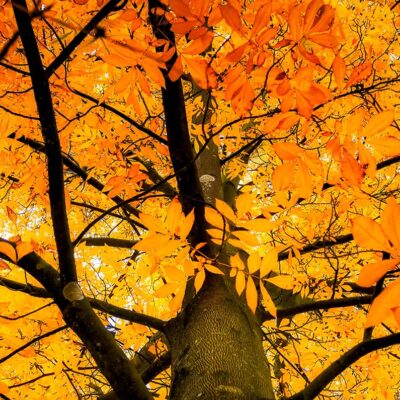Fall ’25 Bare-Roots – Order Now
Fall ’25 Bare-Roots – Order Now
Robinia pseudoacacia
Black Locust is a powerhouse tree able to produce mass amounts of useful biomass while building nitrogen in the soil. Black Locust is in the legume family, and it can convert nitrogen in the air to nitrogen in the soil through the nodules in the roots. It can be planted in areas where it is very difficult to grow other trees and it can greatly assist in regenerating soil. The wood is super rot resistant and hard, which makes for excellent firewood. It can be pruned to a single leader and harvested for fence posts. Be aware that these trees will sucker and have to be managed with regular cutting and mowing. In the right context, such as hedgerows and living fences, its suckering growth habit and thorns can be a huge benefit. In late spring it produces edible, white, fragrant, pea-like flowers that taste delicious. The flowers also attract many native pollinators and serve as the primary larval food source for the Silver-Spotted Skipper.
Although black locust is commonly found in the Northeast, it is native to the Southern Appalachians. NYS DEC regulates black locust to help prevent it from spreading into natural areas. Use black locust only in controlled plantings such as orchard intercropping, hedgerows, or silvopasture.
Zone: 3-8 (Map)
Habitat: Thrives in poor, sandy, well-drained soils. Drought tolerant. Full sun.
Growth: 50 ft tall, 30 ft wide at maturity.
Prohibited: CA, MA, MI, MN


Black Locust provides great hardwood, infuses the soil with nitrogen, and works well in hedgerows.
Black Locust provides great hardwood, infuses the soil with nitrogen, and works well in hedgerows.
Robinia pseudoacacia
Black Locust is a powerhouse tree able to produce mass amounts of useful biomass while building nitrogen in the soil. Black Locust is in the legume family, and it can convert nitrogen in the air to nitrogen in the soil through the nodules in the roots. It can be planted in areas where it is very difficult to grow other trees and it can greatly assist in regenerating soil. The wood is super rot resistant and hard, which makes for excellent firewood. It can be pruned to a single leader and harvested for fence posts. Be aware that these trees will sucker and have to be managed with regular cutting and mowing. In the right context, such as hedgerows and living fences, its suckering growth habit and thorns can be a huge benefit. In late spring it produces edible, white, fragrant, pea-like flowers that taste delicious. The flowers also attract many native pollinators and serve as the primary larval food source for the Silver-Spotted Skipper.
Although black locust is commonly found in the Northeast, it is native to the Southern Appalachians. NYS DEC regulates black locust to help prevent it from spreading into natural areas. Use black locust only in controlled plantings such as orchard intercropping, hedgerows, or silvopasture.
Zone: 3-8 (Map)
Habitat: Thrives in poor, sandy, well-drained soils. Drought tolerant. Full sun.
Growth: 50 ft tall, 30 ft wide at maturity.
Prohibited: CA, MA, MI, MN